Cincinnati's 3CDC: What is it, what are its next projects
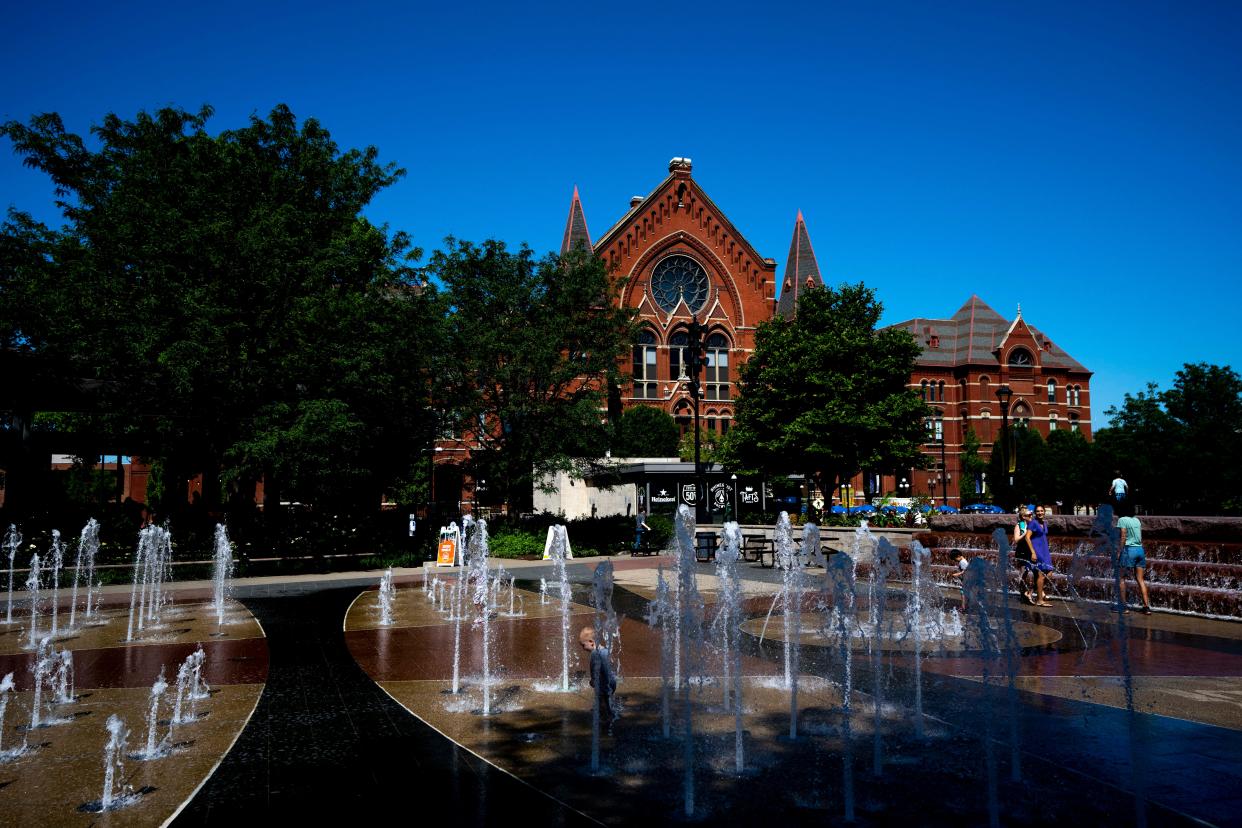
Cincinnati wouldn't be the city it is today without the Cincinnati Center City Development Corp., better known as 3CDC.
Two decades after it was conceived, 3CDC has proven it knows how to get development done − and done fast. Its revitalization work has drawn local and national applause, but some criticize its work as 21st century gentrification.
What is 3CDC?
It's a private entity, rather than a governmental one. But it doesn't really make much money for itself.
3CDC is a non-profit development group born from a 2003 task force. It was created by former Cincinnati Mayor Charlie Luken, local corporate leaders and the city's economic development department. 3CDC's board of directors is made up of leaders from area businesses, including Procter & Gamble, GE Aviation, and Triversity Construction.
What does it do?
Its mission was – and still is – to strengthen Cincinnati's urban core by bolstering opportunities to live, work and play in its business and entertainment districts. The city of Cincinnati is 3CDC's primary client.While 3CDC develops commercial and residential property like any other private developer, it also builds and manages public civic spaces like Fountain Square. But what really sets it apart, according to President and CEO Steve Leeper, is its tolerance for financial risk. The organization buys its properties and, in some cases, such as the street-level retail in Over-the-Rhine, manages them. It also tackles projects that won't yield a major profit, like facilities for people experiencing homelessness.
Where does 3CDC operate?
3CDC limits its reach to Over-the-Rhine and the Central Business District. (Because of its work to revitalize and connect the two neighborhoods, many Greater Cincinnatians − and even some locals who live there − consider the entire area Downtown.)
While the central business district doesn't yet have the kind of hip national acclaim that the once-derelict Over-the-Rhine has garnered in recent years, it could get there with 3CDC's help. The group's previous work to renovate the historic Fountain Square and its new plan to expand the city's convention center district could help usher in a new era of revitalization below Central Parkway as well.
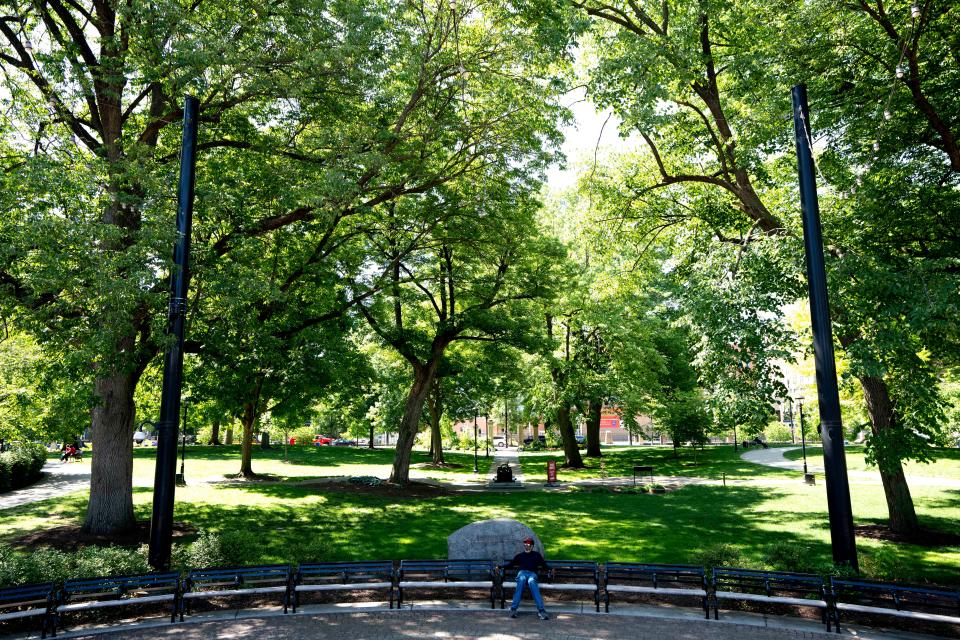
How is 3CDC funded?
Over nearly 20 years, 3CDC has developed projects with a total price tag of nearly $1.7 billion, Leeper said. Cincinnati's corporate community contributes around $1 million annually (about $22 million since it was founded) to that total, while also funding 3CDC's construction projects through revolving loans.
By contributing to local tax increment financing district funds, the taxpayers who are property owners in Downtown and Over-the-Rhine have invested over $243 million in 3CDC's projects. (Tax increment financing district dollars are generated from property taxes raised when property values increase. Developers can request money through the city from the TIF district funds to finance projects in those neighborhoods.)
3CDC also applies for local and state grants to fund its work.
An overwhelming majority of 3CDC's investment in Cincinnati has come from conventional debt financing such as loans or money from tenants like Kroger, which has a five-year-old location Downtown, that pour money into the development project they plan to operate in. 3CDC also receives tax credits from the city and state for new market spending, historic preservation and low-income housing.
Does 3CDC make money?
This year, 3CDC expects to net just over $384,000, the average amount it's made over the last five years annually. Most of that money will go into its capital reserve fund to eventually paint buildings, test new initiatives and programs, or cover the operating deficits incurred at civic spaces.
While it does make money from developer fees on building projects, 3CDC primarily constructs its buildings and parks with funds from the city's TIF district coffers, corporate donations and the aforementioned loans.
For example, the non-profit received historic tax credits on some apartments it restored in Over-the-Rhine and new market tax credits for the 85.41 office building on Race Street. (3CDC is one of the city's largest affordable housing developers, with 460 units so far.)
What about money from parking?
Managing parking facilities − a combined 5,918 spaces − does bring in 3CDC monthly revenue. In 2022, monthly pass holders contributed a total of $5 million, while people parking for one-off experiences like FC Cincinnati games brought in nearly $9 million.
"One of the most common misconceptions about us is that we're rolling in all this parking dough," said spokesperson Joe Rudemiller. "The parking revenue is going to pay down the debt that we took out in order to build projects like Fountain Square."
Another misconception? 3CDC doesn't own most of the apartment complexes it's built so far. Usually, it teams up with another developer who ends up managing the property and making the profits off rent and utilities.
Who works for 3CDC?
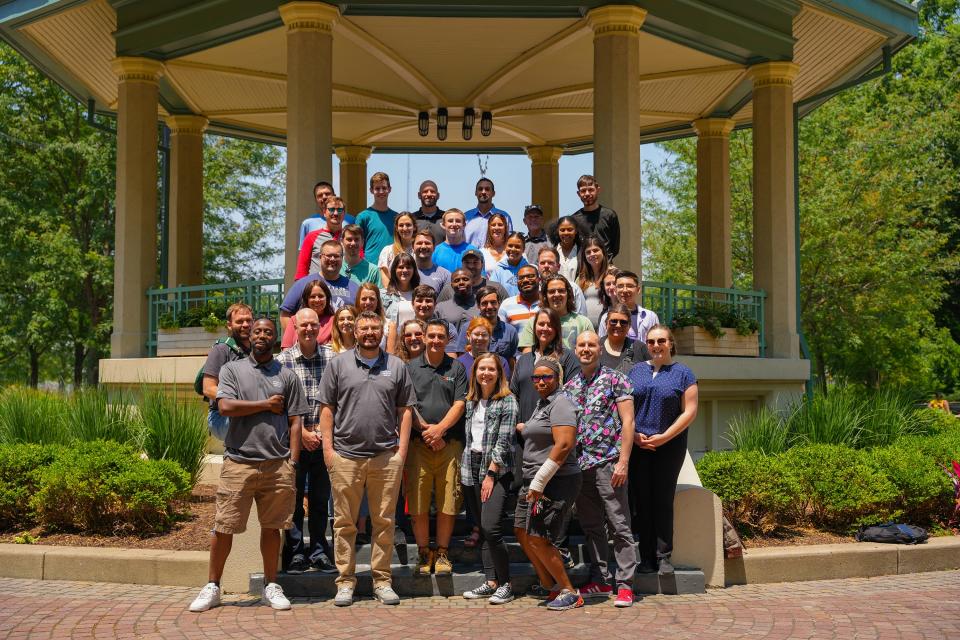
3CDC has 159 full-time staff members across its five divisions of real estate, event management, civic space and public asset management, financial administration and communications.
Another 150 people work seasonally for 3CDC, including its summer camp staffers, lifeguards, landscapers and civic space bartenders.
Eighty-six more work as ambassadors in the Special Improvement Districts of Over-the-Rhine and Downtown Cincinnati. Some are considered "second chance employees," meaning they have either been formerly incarcerated or faced legal issues that make job hunting difficult. As ambassadors, these individuals help maintain a clean and safe environment in the zones they work in, act as first responders in emergency situations, conduct check-ins with area businesses and serve as neighborhood guides. (Nearly 80% of the budget for the Downtown Cincinnati special improvement district goes to funding the ambassadors' clean and safety efforts.)
How much does Steve Leeper make?
Leeper's reported annual income for 2021 was $508,113, per 3CDC's most recent Form 990, its mandatory filing with the Internal Revenue Service. That number also included contributions to his personal retirement savings plan, bonuses and benefits. By comparison, Mayor Aftab Pureval makes $121,291 per year.
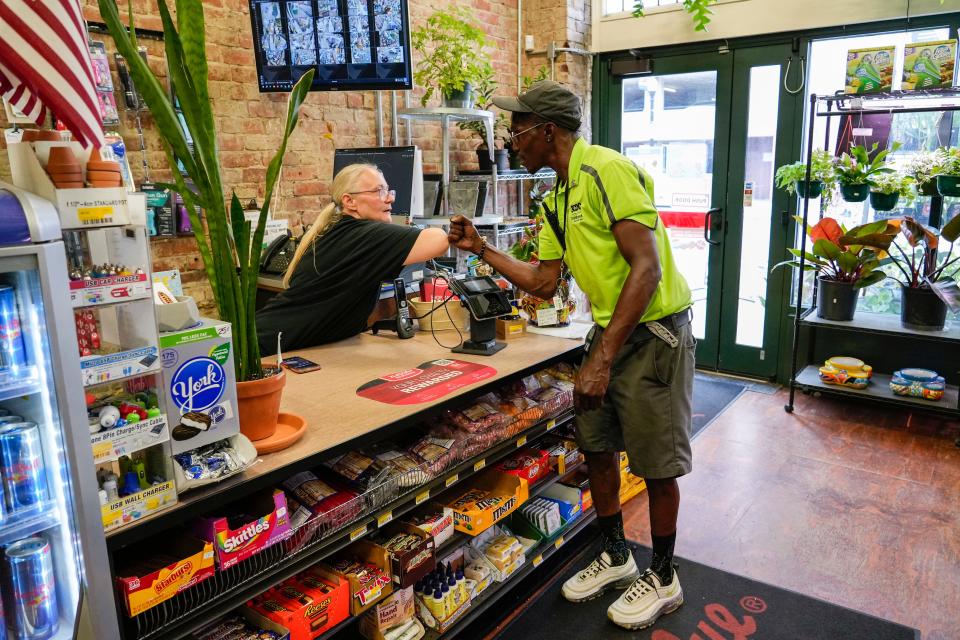
Do other cities have organizations like 3CDC?
The Erie Downtown Development Corporation directly copied 3CDC's model to finance and revitalize downtown Erie, Pa. Founded in 2017, it's also backed by a board of corporations, including PNC Bank and Erie Insurance Company. According to Leeper, support from Cincinnati's corporate community is a key part of 3CDC's existence. Not a lot of cities have the same breadth of Fortune 500 companies willing to pour money into development. Some cities or regions, however, like Northwest Arkansas, have benefited from the philanthropic efforts of private entities like the Walton Family Foundation to finance real estate-related projects. "It's not just the funding, it's their involvement," he said. "The leaders of these companies sit on our board, they are active, they're present and they participate. So we benefit not only from their funding but from their expertise and their time."
The city of Cincinnati also treats 3CDC like it's an alternative economic development group. They hand off projects − some described below − to 3CDC to spearhead because of its track record.
What do 3CDC's critics say?
The Enquirer and national news outlets alike have detailed both the successes and strife of Over-the-Rhine's revitalization. Yes, the predominantly-Black neighborhood was formerly chock-full of vacant buildings that attracted illicit activity, but the areas that were liveable were cheap enough to accommodate low-income renters and homebuyers. The initial questions and concerns over redeveloping the neighborhood still reverberate today. Will it become unaffordable? Will it become more of a tourist destination than a cohesive neighborhood?
The changing demographics provide some clues as to how things have evolved: The Enquirer reported in 2016 that the number of Black residents living in the neighborhood declined by 65 percent between 1990 and 2014. Median income now in the neighborhood hovers around $78,700.
Wealthier people, including more white residents, have moved in and former locals have been pushed out due to rising rents. (It currently costs an average of $1,871 to rent an apartment there, according to RentCafe.com.) Affordable housing in the area declined by 73% between 2022 and 2015, and 3CDC is bringing 88 more housing units, including 39 affordable ones, to Over-the-Rhine above Liberty Street.
One other worry people had is whether or not minority-owned businesses would thrive in the new Over-the-Rhine. Leeper said one of 3CDC's biggest priorities is to bolster local entrepreneurs, especially women and Black business people, with below-market rents and business assistance. Currently, 24% of 3CDC's street-level commercial spaces are Black-owned.
What are 3CDC's most prominent projects so far?
Washington Park: The renovation and expansion of Over-the-Rhine's eight-acre civic space was completed in 2012. It also included the construction of a 450-space underground parking garage.
Music Hall: The 256,500-square-foot theater, built in 1878, initially served as Cincinnati's first convention center. It was renovated in 2017.
Fountain Square: Long considered the heart of Downtown Cincinnati, the two-acre public plaza of Fountain Square was revamped in 2006. It now hosts an array of year-round programming from an ice rink, to a summer salsa night, to concerts, weekday food trucks and a permanent bar kiosk.
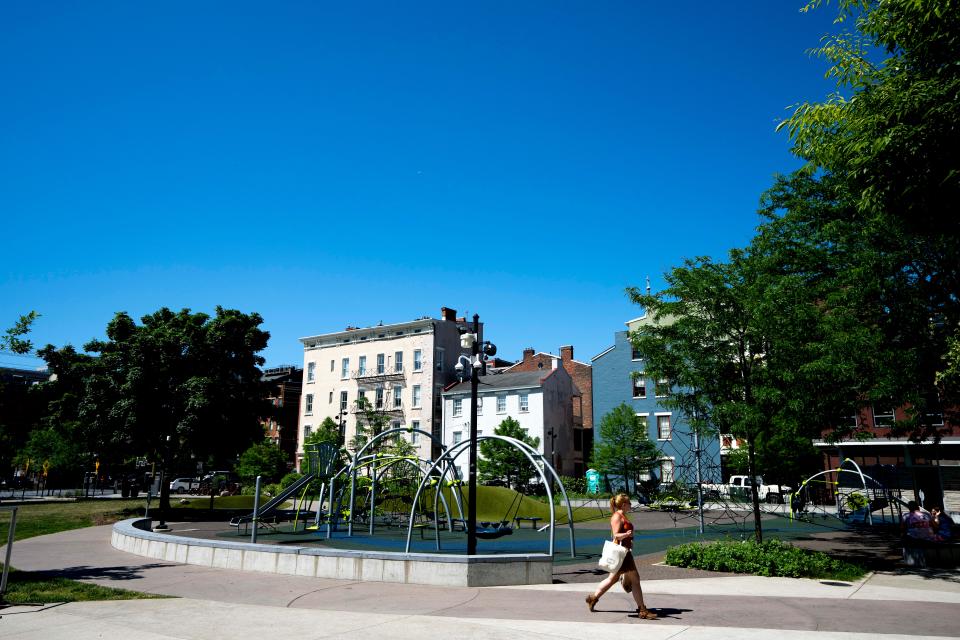
The Foundry: The conversion of Downtown's old Macy's store into the mixed-use, Class-A office building, The Foundry, was completed in 2021. The three-and-half-story structure holds office space for companies such as Deloitte, Turner Construction Co. and Divisions Maintenance Group. Five Iron Golf and Jeff Ruby's Steakhouse are among the street-level retail tenants.
Ziegler Park: In 2017, 3CDC finished the revitalization of the Ziegler Park and Pool in Over-the-Rhine, adding a new playground, a splash pad for kids and landscaping to an expanded four-and-a-half acres. The park was expanded in 2023.
What's next in the 3CDC portfolio?
Duke Energy Convention Center Renovation & Expansion: Downtown Cincinnati's convention center is set to get a $200 million facelift. Not only will it feature a new, contemporary facade, but it will also have expanded exhibition space, improved flow and upgraded energy-efficient building systems.
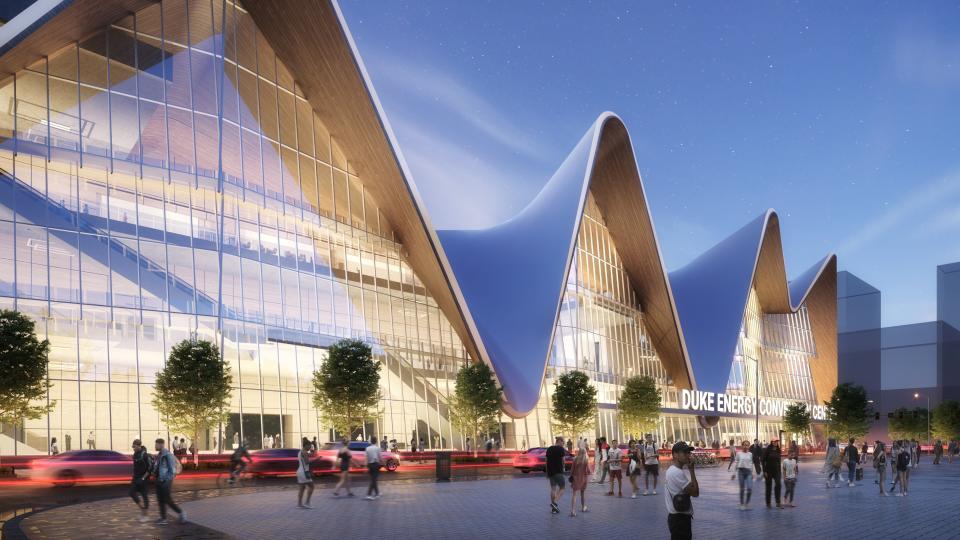
Convention headquarters hotel: Replacing Downtown's former Millennium Hotel will be a new 800-room convention hotel from the development group Portman Holdings. The $470 million project is set to break ground in 2024 on the site of a surface parking lot at Fifth and Plum streets.
Findlay Community Center: A $60 million community center is coming to Over-the-Rhine's northernmost pocket near Findlay Market. 3CDC is also renovating the neighborhood's existing recreation center on Republic Street.
Findlay Flats: Also under development in Over-the-Rhine is an 88-unit, mixed-use housing project on Vine Street. 3CDC will rehabilitate 17 existing structures and turn them into apartments and street-level retail space.
The Annie: 3CDC is rehabilitating four historic buildings on West 12th Street into a 29-unit housing complex with nine affordable housing units for people making 60% to 80% of the area median income, which is as low as $47,000.
What's the latest news with 3CDC?
3CDC keeps anywhere from $250 million to $350 million worth of projects in the pipeline at a time. The next major ambition − and one that Leeper says hasn't been fleshed out - is to build a new shelter for the city's chronically homeless in or around the central business district. The group has also decided to hire two new outreach coordinators through Greater Cincinnati Behavioral Health Services to tackle the issues these people face.
It will release more information about its plans for the convention center soon and is set to go before the city council later this year to ask for TIF district dollars for the Findlay Community Center project.
This article originally appeared on Cincinnati Enquirer: What is 3CDC in Cincinnati? Where does 3CDC get its money?

